READER COMMENTS ON
"Paper Ballot Op-Scan Systems in FL, WI, NY, OH Confirmed to Overheat, Mistally 70% of Votes"
(29 Responses so far...)
COMMENT #1 [Permalink]
...
Charlie L
said on 5/14/2012 @ 7:06 pm PT...
So, the question I pose to you Brad, as the person who has been in the forefront of this battle for what seems like forever, is this:
Given the massive amount of easily available proof that is now available of the total uselessness and failure of electronic vote counting devices, and the simultaneous total lack of investigation by the US Justice Department (they have a Voting Rights Division, don't they?)...
Is our Justice Department INCOMPETENT or IMPLICITLY IN SUPPORT, as being UNAWARE of this situation now seems impossible at this point?
COMMENT #2 [Permalink]
...
Richard Charnin
said on 5/15/2012 @ 5:32 am PT...
This article is nonsense and typical BS from reporters who should know better, but who are technically moribund. Computers don't just fail. There is no CALIBRATION or HEAT problem. This is the same RED-HERRING crap which has been used over and over again and always fool the sheeple. IT'S NOT CODING ERROR. ITS MALICIOUS CODING. Parse the propaganda:
"The state Board of Elections then stepped in to investigate. Technicians calibrated the machine and ran ballots through. The device did fine. But later on, after a few hours had passed, it began to fail with an error rate of close to 100%.
ES&S then ran its own tests and concluded that if a machine is not cleaned correctly, it will lose its calibration once the device warms up to working temperature. Test it while cool, and the count will be perfect; test it warm, and the count will be nonsense".
NO, THE EXPLANATION IS NONSENSE!
They used the same "overheating" canard in Ohio 2004 and 2006. It worked then, it works now and will work in the future. BECAUSE NO ONE CALLS THEM OUT ON THE BS. THEY SEND COMPUTERS TO MARS THAT WORK JUST FINE, BUT THEY CAN'T GET THEM TO WORK HERE? THE SHEEPLE WHO BELIEVE THAT CRAP SHOULD JUST AS WELL LIVE ON MARS.
Is there any hope? I doubt it. Too many people are either ignorant, misinformed or just plain stupid. The mainstream reporters are either stupid or driven by corrupt management to parrot the lies of criminal voting machine manufacturers and the politicians who protect them.
COMMENT #3 [Permalink]
...
Boswell
said on 5/15/2012 @ 7:15 am PT...
Brad, you keep using the word "failure" when in fact it seems the machines are working exactly as intended...
COMMENT #4 [Permalink]
...
Irwin Mainway
said on 5/15/2012 @ 8:01 am PT...
I agree - computers that compute incorrectly when hot is ridiculous. If they fail when presented with large amounts of input they are just designed wrong and the supplier should be sued into oblivion.
If the computer is too hot it will turn off. If not a fire extinguisher is required before suing the supplier into oblivion.
This article doesn't explain how the election results are fixed to at least shave 5% off Democrat's totals, which is all that is usually required to steal elections. Therefore Republicans should also be publicly outraged over defective ballot counters. Hmmmm....
COMMENT #5 [Permalink]
...
Robert
said on 5/15/2012 @ 8:14 am PT...
Just a thought......As we move into mail-in ballots, the repubs want to shut down the Post Office. Voter ID is being used as a voter suppression tool. Big Money has bought the best way to subvert our Democracy (beyond purchasing politicians), they seem to own all of these voting machines. Why can't the Feds use their power to nationalize voting machine manufacturing? Oversight? I really object to being disenfranchised by a small group opposed to me exercising my rights as I should. Maybe this is the one area we should harken back to the 19th century practice of public counting of all ballots.
COMMENT #6 [Permalink]
...
Mitch
said on 5/15/2012 @ 8:23 am PT...
With each passing day, it gets more difficult to accept incompetence as an explanation for these situations.
At a minimum, New York State should sue ES&S. The damages should be enough to put them out of business.
But really, there should be criminal fraud charges against the executives of ES&S and against any New York State official who was aware that the machines could fail in normal use and took no preventive action.
I'm still amazed that California never sued Diebold, even after the flaws in their machines were revealed.
COMMENT #7 [Permalink]
...
nunya
said on 5/15/2012 @ 9:49 am PT...
COMMENT #8 [Permalink]
...
Randy D
said on 5/15/2012 @ 10:26 am PT...
Responding to the claims that computers don't overheat:
1) they shouldn't, if designed well, but it depends on whether your goal is the public good or maximizing profit. (Which is it private corporations are best at?)
2) As I read it, the claim is not that the COMPUTER is overheating (or becoming dirty), but rather the sensor which sends info to the computer.
3) I don't really see this as a way to deliberately swing an election. It doesn't fit that narrative. It does destroy the myth that these machines are accurate in the absence of manipulation.
COMMENT #9 [Permalink]
...
David Lasagna
said on 5/15/2012 @ 10:38 am PT...
Richard Charnin @2--
Please read articles before big anger spews. Brad wrote--
In short, these machines may fail on their own, or someone can cause them to fail and then hide the evidence of the manipulation.
Brad's article here(and the quote above) seems completely consistent with your assertion of deliberate manipulation of the machines as the cause of the counting errors. But his article has the added benefit(which is lacking in your comment) of positing that the problems of mistallied votes could also be caused by simple malfunction of poorly designed machines. You don't seem to allow for that possibility. This strikes me as odd. I have heard these machines described again and again by computer experts as junk. I see no reason to think computer malfunction by poorly made machines is an impossibility.
But junk or no, Brad's article here, as per usual, is comprehensive, clear, and again urges a return to Democracy's Gold Standard of publicly counted, verified, and posted hand counted paper ballots. Your angry criticism of the article as nonsense and BS seems inappropriate and non-sensical to me.
ps.--I don't know how you could have failed to notice this, but calling people "ignorant, misinformed, or just plain stupid" is not a terribly effective strategy for getting anyone to want to listen to you.
COMMENT #10 [Permalink]
...
Mitch
said on 5/15/2012 @ 11:38 am PT...
Randy D,
Without commenting on whether defective equipment is a way to swing an election, let me frame the following hypothetical and follow it with a question:
(1) election officials at sites A-K ensure that machines are shut down when they hear of spurious overvotes; there are enough machines that there is no substantial delay.
(2) election officials at sites L-Z ignore reports of spurious overvotes, so half the votes submitted there don't count.
Would you rather vote at site D, site P, or would you rather contact the Department of Justice?
COMMENT #11 [Permalink]
...
Davey Crocket
said on 5/15/2012 @ 1:41 pm PT...
Richard #2 and Irwin #4,
You both seem to think that it is impossible for a computer to malfunction due to overheating. Your proof text is that we send computers to Mars. Well, you are correct. But it is very cold on Mars.
I assume you really meant to say that if we are smart enough to send a computer to Mars then we are smart enough to make a computer count votes on Earth. If that is what you were thinking then I will agree--we are.
But, it is a fact that computers can and do fail if they overheat. When designed properly for the environmental conditions to be experienced, they should work. If they are not properly engineered, they can fail.
As you are reading this post...ask yourself, "What is that whirr in the background?" It is the fan in your computer. Why is it there? To keep your computer from overheating!
COMMENT #12 [Permalink]
...
Ernest A. Canning
said on 5/15/2012 @ 3:03 pm PT...
Richard Charnin @2 wrote:
Computers don't just fail. There is no CALIBRATION or HEAT problem.
But see, Overheating as a cause of computer crashes.
As David Lasagna @9 wrote, quoting Brad's article, "these machines may fail on their own, or someone can cause them to fail and then hide the evidence of the manipulation."
If you have direct, scientific evidence that, in this instance, someone purposely caused the ES&S DS200 system failure described in this article, by all means, present the evidence for all to see and review.
If you lack such evidence, your comment amounts to nothing more than unverifiable opinion.
COMMENT #13 [Permalink]
...
Davey Crocket
said on 5/15/2012 @ 3:26 pm PT...
EC #12
Read my post again. I was careful not to draw any conclusions about the ES&S DS200.
Lasagna @9 is correct.
The Helium article is correct.
Here is what Irwin said:
"I agree - computers that compute incorrectly when hot is ridiculous."
He is incorrect.
You read too much into my post.
I simply wanted to clear up some errors about how computers work...or sometimes don't work.
COMMENT #14 [Permalink]
...
Brian ofBuderim
said on 5/15/2012 @ 4:38 pm PT...
Perhaps American election officials should look at the Russian vote scanners. We see them on TV and they seem to work perfectly.
The fallback is to have all votes counted by hand and forget machines: works well in Australia. Perhaps the US should copy.
COMMENT #15 [Permalink]
...
Dael
said on 5/15/2012 @ 7:04 pm PT...
COMMENT #16 [Permalink]
...
David Lasagna
said on 5/15/2012 @ 7:45 pm PT...
Davey Crockett @13-
As I read Ernie @12 he was responding to Mr. Charnin @2.
COMMENT #17 [Permalink]
...
Richard Charnin
said on 5/15/2012 @ 9:47 pm PT...
Ernest Canning: You really accept this canard?
"ES&S then ran its own tests and concluded that if a machine is not cleaned correctly, it will lose its calibration once the device warms up to working temperature. Test it while cool, and the count will be perfect; test it warm, and the count will be nonsense".
So how do you explain the fact that 95% of vote-switching incidents always favor the GOP? Is that due to overheating?
From my website: http://richardcharnin.com/
Election forecasters, academics, political scientists and main stream media pundits never discuss or analyze the statistical evidence that proves election fraud is systemic - beyond a reasonable doubt. This site contains a compilation of presidential, congressional and senate election analyses based on pre-election polls, unadjusted exit polls and associated True Vote Models. Those who never discuss or analyze Election Fraud should focus on the factual statistical data and run the models. If anyone wants to refute the analytical evidence, they are encouraged to do so in a response. Election forecasters, academics and political scientists are welcome to peer review the content.
The bedrock of the evidence derives from this undisputed fact: Final national and state exit polls are always forced to match the recorded vote – even if doing so requires an impossible turnout of prior election voters and implausible vote shares. All demographic categories are adjusted to conform to the recorded vote. To use these forced final exit polls as the basis for election research is unscientific and irresponsible. The research is based on the bogus premise that the recorded vote is sacrosanct and represents how people actually voted. Nothing can be further from the truth.
It is often stated that exit polls were very accurate in elections prior to 2004, but have deviated sharply from the vote since. The statement is a misconception; it is based on a comparison of FINAL exit polls in elections prior to 2004 and PRELIMINARY exit polls since. It's apples and oranges. But FINAL exit polls published in the media have always been FORCED to match the RECORDED vote. That's why they APPEAR to have been accurate.
The RECORDED vote has deviated sharply from the TRUE VOTE in EVERY election since 1968. Yes, it is true: UNADJUSTED exit polls have ALWAYS been accurate. They closely matched the True Vote in 2000, 2004, 2006, 2008 and 2010. FINAL exit polls have exactly matched the fraudulent RECORDED vote because they have been forced to do so.
It is a documented fact that millions of votes are uncounted in every election. The Census Bureau indicates that since 1968, approximately 80 million more votes were cast than recorded. And these are just the uncounted votes. What about the votes switched on unverifiable voting machines and central tabulators? But vote miscounts are only part of the story. The True Vote analysis does not include the millions of potential voters who were illegally disenfranchised and never got to vote.
My book, Proving Election Fraud: Phantom Voters, Uncounted Votes, and the National Exit Poll, is a detailed analysis which proves that the recorded vote is always different from the True Vote. Unlike the misinformation spread in the media, voting machine “glitches” are not due to machine failures. It’s the fault of the humans who program them.
In the 1968-2008 Presidential elections, the Republicans won the recorded vote by a 49-45% margin. The Recursive National True Vote Model indicates that the Democrats actually won by 49-45%.
In the 1988-2008 elections, the Democrats won the average of the unadjusted state exit polls 51.6-41.8%. The 3% exit poll margin of error was exceeded in 148 state elections, of which 138 shifted to the Republican. The proof is in the 1988-2008 Unadjusted State Exit Polls Statistical Reference.
In 1988, Bush defeated Dukakis by 7 million recorded votes. But 11 million ballots uncounted. Approximately 75% of uncounted votes are Democratic. It was a very close election. Dukakis won the unadjusted exit polls in 24 battleground states by 51-47% . He won the unadjusted National Exit Poll by 50-49%. In 1992, the Collier brothers wrote “Votescam”, a classic expose which provided evidence that Bush Sr. stole the election by rigging the voting machines.
In 1992, Clinton defeated Bush by 5.8 million recorded votes (43.0-37.5%), but once again, nearly 10 million were uncounted. In order to match the recorded vote, the National Exit Poll was forced to match the recorded vote with an impossible 119% turnout of living 1988 Bush voters in 1992. The unadjusted state exit polls had Clinton winning an 18 million vote landslide (48-32%). The True Vote Model indicates that Clinton won by 50-31% with 19% voting for third party candidate Ross Perot.
In 2000, Al Gore won the unadjusted state exit polls (58,000 respondents) by 50.8-44.4%, a 6 million vote margin compared to the 540,000 recorded. There were nearly 6 million uncounted votes. But the Supreme Court awarded the election to Bush (271-267 EV) when they stopped the recount in Florida – where 185,000 ballots were uncounted. The following states flipped from Gore in the exit poll to Bush in the recorded vote: AL AR AZ CO FL GA MO NC TN TX VA. Gore would have won the election if he captured just one of the states. Democracy died in this election.
In July 2004 I began posting weekly 2004 Election Model projections based on the state and national polls. The model was the first to use Monte Carlo Simulation and sensitivity analysis to calculate the probability of winning the electoral vote. The final projection had Kerry winning 337 electoral votes and 51.8% of the two-party vote, closely matching the unadjusted exit polls.
The Final 2004 National Exit Poll was mathematically impossible since it indicated that there were 52.6 million returning Bush 2000 voters - but he had just 50.5 million recorded votes. Only 48 million were alive in 2004. Approximately 46 million voted, therefore the Final overstated the number of returning Bush voters by 6-7 million. The Final NEP implied that there was an impossible 110% turnout of living 2000 Bush voters in 2004. The post-election True Vote Model calculated a feasible turnout of living 2000 voters based on Census total votes cast (recorded plus net uncounted), a 1.25% annual mortality rate and 98% Gore/Bush voter turnout. It determined that Kerry won by 67-57 million and had 379 EV.
But there was much further confirmation of a Kerry landslide. Consider Final NEP adjustments made to Bush’s approval rating and Party–ID crosstabs.
Bush had a 48% national approval rating in the final 11 pre-election polls. But the Final NEP indicated that he had a 53% rating – even though he had just 50% in the unadjusted state exit poll weighted aggregate. Given the 3% differential between the Final NEP and state exit poll approval ratings, let’s deduct 3% from his 48% pre-election approval, giving him a 45% vote share. That is a virtual match to the True Vote Model (which Kerry won by 53.5-45.5%). The exit pollsters inflated Bush’s final pre-election 48% average rating by 5% in the Final NEP order to force a match to the recorded vote - and perpetuate the fraud. Kerry’s 51.7% unadjusted state exit poll aggregate understated his True Vote Model share. There was a near-perfect 0.99 correlation ratio between Bush‘s state approval and unadjusted exit poll share.
The unadjusted state exit poll aggregate Democratic/Republican Party ID split was 38.8-35.1%. As they did in all demographic crosstabs, the pollsters had to force the Final National Exit Poll to match the recorded vote; they needed to specify a bogus 37-37% split. The correlation between state Republican Party ID and the Bush unadjusted shares was a near-perfect 0.93.
This chart displays the state unadjusted Bush exit poll share, approval ratings and Party-ID.
The Final 2006 National Exit Poll indicated that the Democrats had a 52-46% vote share. The Generic Poll Trend Forecasting Model projected that the Democrats would capture 56.43% of the vote. It was within 0.06% of the unadjusted exit poll.
In the 2008 Primaries, Obama did significantly better than his recorded vote.
The 2008 Election Model projection exactly matched Obama’s 365 electoral votes and was within 0.2% of his 52.9% share (a 9.5 million margin). But the model understated his True Vote. The forecast was based on final likely voter (LV) polls that had Obama leading by 7%. The registered voter (RV) polls had him up by 13% - before undecided voter allocation. The landslide was denied.
The Final 2008 National Exit Poll was forced to match the recorded vote by indicating an impossible 103% turnout of living Bush 2004 voters and 12 million more returning Bush than Kerry voters. Given Kerry’s 5% unadjusted 2004 exit poll and 8% True Vote margin, one would expect 7 million more returning Kerry than Bush voters – a 19 million discrepancy from the Final 2008 NEP. Another anomaly: The Final 2008 NEP indicated there were 5 million returning third party voters - but only 1.2 million were recorded in 2004. Either the 2008 NEP or the 2004 recorded third-party vote share (or both) was wrong. The True Vote Model determined that Obama won by over 22 million votes with 420 EV. His 58% share was within 0.1% of the unadjusted state exit poll aggregate (83,000 respondents).
In the 2010 Midterms, the statistical evidence indicates that many elections for House, Senate and Governor were stolen. The Wisconsin True Vote Model contains worksheets for Senate, Governor, Supreme Court and Recall elections. A serious analyst can run them and see why it is likely that they were stolen.
COMMENT #18 [Permalink]
...
Richard Charnin
said on 5/16/2012 @ 6:22 am PT...
COMMENT #19 [Permalink]
...
Richard Charnin
said on 5/16/2012 @ 6:38 am PT...
It's funny. I never heard of a bank discouraging clients from making withdrawals or deposits in July or August.
Diebold (now Premier) makes ATM machines that work just fine in warm or cold weather, and they give you a receipt.
COMMENT #20 [Permalink]
...
Ernest A. Canning
said on 5/16/2012 @ 9:23 am PT...
Richard Charnin @17 wrote:
Ernest Canning: You really accept this canard?
"ES&S then ran its own tests and concluded that if a machine is not cleaned correctly, it will lose its calibration once the device warms up to working temperature. Test it while cool, and the count will be perfect; test it warm, and the count will be nonsense".
I neither accepted nor rejected it, Richard.
I agree with you that the models you've developed provide significant circumstantial evidence that suggests the ES&S failures were "intended." But that is not the same as your blanket overstatement "computers just don't fail."
The fact is that errors of design can produce system failures.
It is one thing for you to present statistical evidence that implicates malicious intent. Quite another to make what amount to blanket allegations without hard-and-fast evidence.
Finally, whether the "failure" is intended or the product of defective systems is really not the critical issue. The mere "potential" for insider manipulation should be enough to scrap all e-voting systems and replace them with Democracy's Gold Standard --- hand marked paper ballots, publicly hand counted at each precinct on Election Night.
COMMENT #21 [Permalink]
...
Big M
said on 5/16/2012 @ 10:08 am PT...
People who vote are idiots. People who vote on these machines deserve whatever they get.
COMMENT #22 [Permalink]
...
Brad Friedman
said on 5/16/2012 @ 10:53 am PT...
Richard Charnin said @ 19:
It's funny. I never heard of a bank discouraging clients from making withdrawals or deposits in July or August.
Diebold (now Premier) makes ATM machines that work just fine in warm or cold weather, and they give you a receipt.
It seems you failed to note the comments above concerning the fact that the issue, at least as ES&S claims, is not a computer software failure, per se, but a hardware failure in the optical-scan sensor when it becomes overheated. While I can't confirm the science of their explanation, it certainly sounds plausible.
Comparing these crappy, cheapest-possible systems made by ES&S with ATMs made by Diebold which have been hardened to withstand all sorts of outdoor elements as well as intrusion attempts (remember, they store thousands and thousands of dollars of cash in them), is silly. They are two different types of systems entirely and made as cheaply as possible in the case of voting systems. Feel free to review the stunning Dan Rather expose on the shitty (non-existent) quality control used on ES&S touch-screens as made in a Filipino sweatshop if you need a reminder.
What you seem to be suggesting above is that there are not computer malfunctions or programming bugs, but only holes used to steal elections. While, as a former computer programmer I can assure you that you are wrong about bugs (they occur ALL the time, no matter what, even in programs not meant to tally elections), your suggestion that each of hundreds of security holes, poor designs and software bugs discovered by independent testers in states across the country from CA to OH to FL to NJ to CO, etc. are all designed, on purpose, to steal election is...with out evidence to support it.
Simply because you believe almost all elections are being stolen, doesn't mean they are. Simply because they can be stolen, doesn't mean they are. Simply because there are failures in hardware and software design that could be manipulated in order to steal elections, doesn't mean there exists evidence that happened in cases like NY, short of evidence to demonstrate as much.
You can keep shouting "FRAUD" in a crowded election, but unless you have evidence to prove that allegation, don't expect folks to give your allegations much credence. And, by the way, the more you shout that, without evidence, the harder it is for folks like us who actually think evidence is necessary before accusing someone of "fraud", to get much credence either, even when we do have actual evidence for such charges.
P.S. As I'm sure you know, Richard, having studied and writing about elections for so many years, nobody should ever leave a polling place with a "receipt" revealing how they voted --- as you seemed to clumsily suggest in your comment.
COMMENT #23 [Permalink]
...
Frank, Bronx NY
said on 5/16/2012 @ 2:51 pm PT...
I am a New Yorker who voted in the 2010 election on one of the DS200 systems.
When I read the following paragraph in the report above, my immediate reaction was, "...Wait, that doesn't sound right."
So, for example, in New York's 2010 election, if a voter had properly voted for Democrat Andrew Cuomo in the gubernatorial contest, the machine might have seen another non-existent, or "phantom" mark for Republican Carl Palladino on that ballot in the same race. If so, it would have been seen as an overvote, and neither selection would be tallied. The voter would have been disenfranchised and never even knew it.
That's not how those machines work. After scanning the ballot, a giant, full-screen confirmation message is displayed, reporting any scanning issues (blank ballots, overvotes), or reporting that the ballot scanned with no errors. The user is then presented with the option to record their vote as scanned, or bail and return the ballot so they can make corrections. If they choose to register their vote, the ballot is not re-scanned, the previous scan is simply recorded as official. So I simply don't understand how the scenario presented above would be possible — the machines would have to be recording the results of the scanning process differently than they report to the user. That's not how computers work, not through any sort of mechanical or programmer error. That would require machines deliberately programmed to defraud, which is an assertion even more dire than what's being claimed here. Surely it's not being suggested (by the non-tin-foil-hatters) that the machines are programmed to intentionally and maliciously deceive the voter, and tamper with their vote?
COMMENT #24 [Permalink]
...
Richard Charnin
said on 5/16/2012 @ 3:32 pm PT...
Brad Friedman @22:
"It seems you failed to note the comments above concerning the fact that the issue, at least as ES&S claims, is not a computer software failure, per se, but a hardware failure in the optical-scan sensor when it becomes overheated. While I can't confirm the science of their explanation, it certainly sounds plausible."
Brad, that sounds plausible to you? You cannot confirm the "science" of their explanation. The question is: Can they?
How much more evidence do you need after all these years to know that the voting machine manufacturers lie about everything.
And their explanation sounds "plausible" to you?
When have they ever tolsd the truthabout anything?
Just what is the temperature at which the system would fail?
And their explanation sounds "plausible" to you?
When was the last time your computer overheated?
And their explanation sounds "plausible" to you?
How many days during the year do you have your machine running? I am on every day for an average of 15-18 hours. That's over 5000 hours a year.
It never overheats.
How many hours is the voting machine plugged in during the course of a year? And you believe their claim that it overheats in a few hours?
Does their explanation still sound "plausible" to you?
They also say that when it is "cool" the system performs "perfectly".
That is a lie. We know that the voting machines miscount and switch votes on regular basis.
Does their explanation still sound "plausible" to you?
COMMENT #25 [Permalink]
...
Richard Charnin
said on 5/16/2012 @ 3:43 pm PT...
Frank @23 wrote:
"So I simply don't understand how the scenario presented above would be possible — the machines would have to be recording the results of the scanning process differently than they report to the user. That's not how computers work, not through any sort of mechanical or programmer error. That would require machines deliberately programmed to defraud, which is an assertion even more dire than what's being claimed here. Surely it's not being suggested (by the non-tin-foil-hatters) that the machines are programmed to intentionally and maliciously deceive the voter, and tamper with their vote?"
Frank, you have obviously never written a program.
Have you ever heard of the Hursti Hack?
Watch how the voting machine can switch votes.
http://www.youtube.com/watch?v=eDKE28stsZ8
Yes, Frank, voting machines can be programmed to miscount votes - even while reporting to the voter "proof" of how they voted.
WHAT YOU SEE ON PAPER OR ON THE SCREEN DOES NOT PROVE THAT THE VOTE IS RECORDED AS CAST INSIDE THE IS THE CENTRAL TABULATOR WHERE THE VOTES ARE COUNTED.
In other words, the screen can show you voted for A externally but the computer records it B.
The only tin-foil is the garbage that the voting machines report.
COMMENT #26 [Permalink]
...
Brad Friedman
said on 5/16/2012 @ 6:46 pm PT...
Richard Charnin @ 25:
Yes, my computer (and yours) overheats all the time (unless you have a Mac). You know that little fan that kicks in? That's because the machine has gotten too hot. Hopefully the fan cools it down. It doesn't always.
Nonetheless, I didn't say I believed their claim, and noted that I could not vouch for their science, having not seen the testing myself. I said it's a plausible explanation (cheap computer hardware overheating, causing the optical reader to misread when/if parts expand due to the heat, etc.) Remember, these shitty machines do not read ballots accurately if they are cut an 8th of an inch too large, or if reflective or red ink is used instead of black, etc.
They are crap. So, yes, they fail. Is that what happened here? If so, is it due to the reason they claim? I can't know, but am willing to take them at their word long enough to warn anybody else who uses those same machines that they should not.
Do you have a problem with that?
As to your contention that each of the hundreds of bugs and flaws and security holes and known failures of these machines are actually there in order so that elections can be stolen by them, well, so far you've offered even less evidence to back up that contention than ES&s has offered to explain why their shitty machines mistabulated thousands of valid votes.
(BTW, can bad guys take advantage of the various bugs and flaws and security holes in these machines? Of course they can, which is why I've spent about a decade here pointing out how foolish and disrespectful to the voters in a democracy that it is to use them!)
COMMENT #27 [Permalink]
...
Brad Friedman
said on 5/16/2012 @ 6:54 pm PT...
Frank @ 23 said:
I simply don't understand how the scenario presented above would be possible — the machines would have to be recording the results of the scanning process differently than they report to the user.
Right. Either that, or they offered an overvote warning that was unclear, ignored or not understood (or that a voter simply didn't have time to deal with.)
That's not how computers work, not through any sort of mechanical or programmer error. That would require machines deliberately programmed to defraud
Actually, it's absolutely "how computers work". What is shown to you on the screen needn't have anything at all to do with what is recorded internally. It's a point I've been trying to drill home for folks who are unfortunately enough to have to use 100% unverifiable touch-screen systems for years. The same is true on an op-scan system which uses a computer monitor to tell you what's going on on your ballots while it's scanned.
That said, I am aware of no evidence at this time to suggest the massive failure was meant to deliberately defraud (well, perhaps to defraud the county and state who thought they were getting good equipment for their money, but not to defraud the election.) It may have been a way to defraud an election, but I'm aware of no such evidence to support that contention at this time (though obviously Richard Charnin feels strongly otherwise.)
Surely it's not being suggested (by the non-tin-foil-hatters) that the machines are programmed to intentionally and maliciously deceive the voter, and tamper with their vote?
Many non-tin-foil-hatters have indeed suggested that over the years. And there is a good deal of evidence to show that if the type of design and programming here wasn't used to to allow tampering, it certainly allows for that, very easily, nonetheless.
Did that happen here? Obviously, we don't know. The evidence does not yet suggest as much. But to pretend that the machines are not easily tampered in order to deceive the voter, would be silly --- at least if you've come to learn anything about these horrible systems.
COMMENT #28 [Permalink]
...
Richard Charnin
said on 5/16/2012 @ 7:51 pm PT...
Brad Friedman and Ernest Canning are two of the best activists in the world fighting for fair elections. I have the greatest respect for both; we know each other very well. I have posted on Bradblog since 2005.
Our disagreements are minor. We agree that our elections are a fraud. We agree that the ballots should be hand-counted.
We only differ in our approach. My focus has been on proving election fraud mathematically - beyond a reasonable doubt. I have accomplished that.
Brad and Ernest are more conservative. They are very careful not to make absolute statements without absolute "proof".
My frustration should be apparent in my tone. I have lost patience. We need to call a spade a spade.
We have been lied to and ignored by the pollsters and the media and the election officials and the politicians and the voting machine manufacturers over and over again. There is no reason to believe anything they say any longer since they have never attempted to expose the systemic election fraud that has turned our called democracy into a cruel hoax.
I just cannot accept the constant bS from the voting machine manufacturers every time their systems are caught miscounting the votes.
It's always a "glitch" or a "mechanical failure" or an operator "error" or a "miscalibration" or a programming "error".
BUT IT'S NEVER DUE TO MALICIOUS CODING.
______________________________________________
Consider this:
The Election 2004 Incident Database shows that Kerry votes were flipped to Bush votes in 86 of 88 vote switching incidents.
The probability P that at least 86 of 88 votes would flip to Bush is ONE IN SEVENTY-NINE BILLION TRILLION.
Here is the proof:
Let P be the probability that 86 or 87 or 88 votes flip to Bush.
P = Prob(86)+ Prob (87)+ Prob(88)
Prob(86)= 1.23689E-23 = BINOMDIST(86,88,0.5,FALSE)
Prob(87)= 2.84343E-25 = BINOMDIST(87,88,0.5,FALSE)
Prob(88)= 3.23117E-27 = BINOMDIST(88,88,0.5,FALSE)
P = Prob (86 or 87 or 88)= 0.00000000000000000000001266
or 1 in 79,010,724,999,066,700,000,000
How do you express a number that large?
Is there anything comparable, anywhere?
Are there that many stars in the universe?
Are there that many grains of sand on the Earth?
How long would it take to flip that many coins?
If you flip one coin every second, that's 3600 in an hour, 86,400 in a day, 31,536,000 in a year.
It would take 2,505,413,654,206,830 (2505 trillion) years!
To put it in perspective, the universe is is "only" 14 billion years old.
COMMENT #29 [Permalink]
...
An Infinitude of Tortoises
said on 5/16/2012 @ 8:58 pm PT...
Richard Charnin @ 28:
Well, since you ask....
How do you express a number that large?
~7.9 × 10^22
Is there anything comparable, anywhere?
Yes; see below.
Are there that many stars in the universe?
~3.0 × 10^23, per one recent study (Dokkum, 2010) --- an order of magnitude greater than your probability figure.
Are there that many grains of sand on the Earth?
I've read that it's probably between 10^20 and 10^24, so yes, there could well be that many.
To put it in perspective, the universe is is "only" 14 billion years old.
Or about 4.32 × 10^23 microseconds!
Anyhow, that's some very impressive and compelling analysis you've done on the election results, from what little of it I've read thus far, and I look forward to reading more.
 New paper ballot optical-scan computer tabulator systems used to tally millions of votes in New York --- as well as "swing states" such as Florida, Ohio and Wisconsin --- do not tally votes correctly. That stunning admission comes courtesy of a new report released by the private company which manufactures, sells, services and programs the systems which are now believed to have mistallied tens of thousands of ballots in New York in 2010.
New paper ballot optical-scan computer tabulator systems used to tally millions of votes in New York --- as well as "swing states" such as Florida, Ohio and Wisconsin --- do not tally votes correctly. That stunning admission comes courtesy of a new report released by the private company which manufactures, sells, services and programs the systems which are now believed to have mistallied tens of thousands of ballots in New York in 2010.

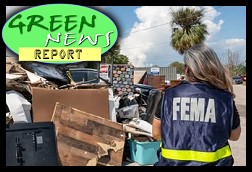 'Green News Report' 4/1/25
'Green News Report' 4/1/25
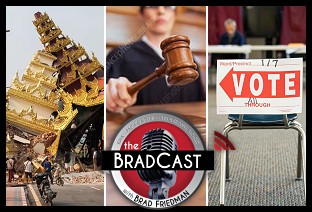 Bad Court and Election News for Trump is Good News for America: 'BradCast' 3/31/25
Bad Court and Election News for Trump is Good News for America: 'BradCast' 3/31/25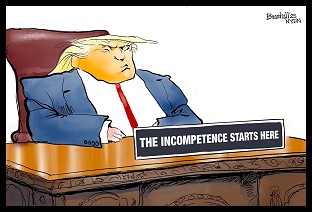 Sunday 'Great Start!' Toons
Sunday 'Great Start!' Toons Vets Push Back at Trump, Musk Plan to Slash Health Care, 80K V.A. Jobs: 'BradCast' 3/27/25
Vets Push Back at Trump, Musk Plan to Slash Health Care, 80K V.A. Jobs: 'BradCast' 3/27/25 'Green News Report' 3/27/25
'Green News Report' 3/27/25 Signal Scandal Worsens for Trump, GOP; Big Dem Election Wins in PA: 'BradCast' 3/26
Signal Scandal Worsens for Trump, GOP; Big Dem Election Wins in PA: 'BradCast' 3/26 'Emptywheel' on Why Trump NatSec Team Should 'Resign in Disgrace' After Signal Chat Debacle: 'BradCast' 3/25/25
'Emptywheel' on Why Trump NatSec Team Should 'Resign in Disgrace' After Signal Chat Debacle: 'BradCast' 3/25/25 'Green News Report' 3/25/25
'Green News Report' 3/25/25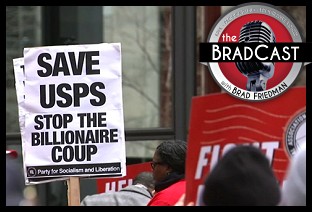 USPS 'Belongs to the People, Not the Billionaires': 'BradCast' 3/24/25
USPS 'Belongs to the People, Not the Billionaires': 'BradCast' 3/24/25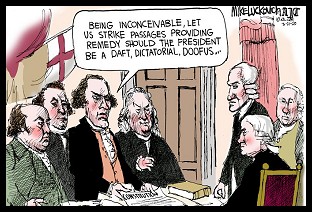 Sunday 'Suddenly Conceivable' Toons
Sunday 'Suddenly Conceivable' Toons 'Green News Report' 3/20/25
'Green News Report' 3/20/25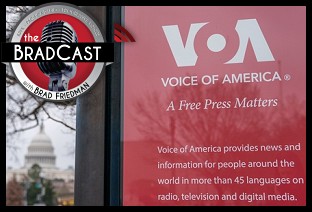 We're ALL Voice of America Now: 'BradCast' 3/20/25
We're ALL Voice of America Now: 'BradCast' 3/20/25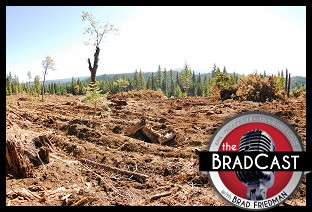 What Trump's 'Timber Production Expansion' Means (and Costs): 'BradCast' 3/19/25
What Trump's 'Timber Production Expansion' Means (and Costs): 'BradCast' 3/19/25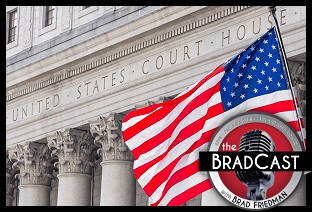 Courts Largely Holding Against Trump, Musk Lawlessness: 'BradCast' 3/18/25
Courts Largely Holding Against Trump, Musk Lawlessness: 'BradCast' 3/18/25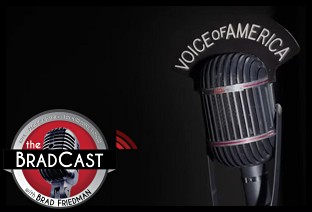 Chief VOA Reporter on Outlet Falling Silent First Time Since 1942: 'BradCast' 3/17/25
Chief VOA Reporter on Outlet Falling Silent First Time Since 1942: 'BradCast' 3/17/25 Trump EPA Unveils Plans to Endanger, Sicken Americans: 'BradCast' 3/13/25
Trump EPA Unveils Plans to Endanger, Sicken Americans: 'BradCast' 3/13/25 Trump Nixed Enforce-ment Against 100 Corp. Lawbreakers: 'BradCast' 3/12/25
Trump Nixed Enforce-ment Against 100 Corp. Lawbreakers: 'BradCast' 3/12/25 Bad Day for 'Strongmen': 'BradCast' 3/11
Bad Day for 'Strongmen': 'BradCast' 3/11 WI Election Could Flip Supreme Court Control, Musk Jumps In: 'BradCast' 3/10
WI Election Could Flip Supreme Court Control, Musk Jumps In: 'BradCast' 3/10
 VA GOP VOTER REG FRAUDSTER OFF HOOK
VA GOP VOTER REG FRAUDSTER OFF HOOK Criminal GOP Voter Registration Fraud Probe Expanding in VA
Criminal GOP Voter Registration Fraud Probe Expanding in VA DOJ PROBE SOUGHT AFTER VA ARREST
DOJ PROBE SOUGHT AFTER VA ARREST Arrest in VA: GOP Voter Reg Scandal Widens
Arrest in VA: GOP Voter Reg Scandal Widens ALL TOGETHER: ROVE, SPROUL, KOCHS, RNC
ALL TOGETHER: ROVE, SPROUL, KOCHS, RNC LATimes: RNC's 'Fired' Sproul Working for Repubs in 'as Many as 30 States'
LATimes: RNC's 'Fired' Sproul Working for Repubs in 'as Many as 30 States' 'Fired' Sproul Group 'Cloned', Still Working for Republicans in At Least 10 States
'Fired' Sproul Group 'Cloned', Still Working for Republicans in At Least 10 States FINALLY: FOX ON GOP REG FRAUD SCANDAL
FINALLY: FOX ON GOP REG FRAUD SCANDAL COLORADO FOLLOWS FLORIDA WITH GOP CRIMINAL INVESTIGATION
COLORADO FOLLOWS FLORIDA WITH GOP CRIMINAL INVESTIGATION CRIMINAL PROBE LAUNCHED INTO GOP VOTER REGISTRATION FRAUD SCANDAL IN FL
CRIMINAL PROBE LAUNCHED INTO GOP VOTER REGISTRATION FRAUD SCANDAL IN FL Brad Breaks PA Photo ID & GOP Registration Fraud Scandal News on Hartmann TV
Brad Breaks PA Photo ID & GOP Registration Fraud Scandal News on Hartmann TV  CAUGHT ON TAPE: COORDINATED NATIONWIDE GOP VOTER REG SCAM
CAUGHT ON TAPE: COORDINATED NATIONWIDE GOP VOTER REG SCAM CRIMINAL ELECTION FRAUD COMPLAINT FILED AGAINST GOP 'FRAUD' FIRM
CRIMINAL ELECTION FRAUD COMPLAINT FILED AGAINST GOP 'FRAUD' FIRM RICK SCOTT GETS ROLLED IN GOP REGISTRATION FRAUD SCANDAL
RICK SCOTT GETS ROLLED IN GOP REGISTRATION FRAUD SCANDAL VIDEO: Brad Breaks GOP Reg Fraud Scandal on Hartmann TV
VIDEO: Brad Breaks GOP Reg Fraud Scandal on Hartmann TV RNC FIRES NATIONAL VOTER REGISTRATION FIRM FOR FRAUD
RNC FIRES NATIONAL VOTER REGISTRATION FIRM FOR FRAUD EXCLUSIVE: Intvw w/ FL Official Who First Discovered GOP Reg Fraud
EXCLUSIVE: Intvw w/ FL Official Who First Discovered GOP Reg Fraud GOP REGISTRATION FRAUD FOUND IN FL
GOP REGISTRATION FRAUD FOUND IN FL


































